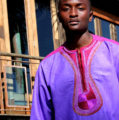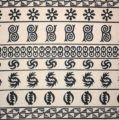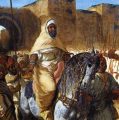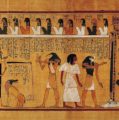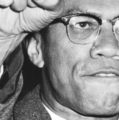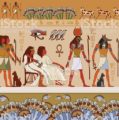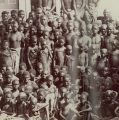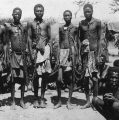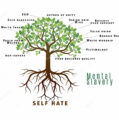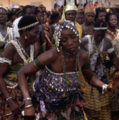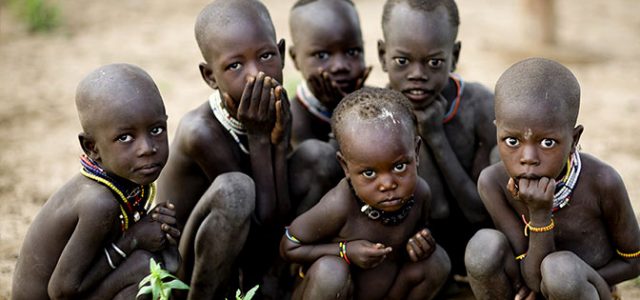
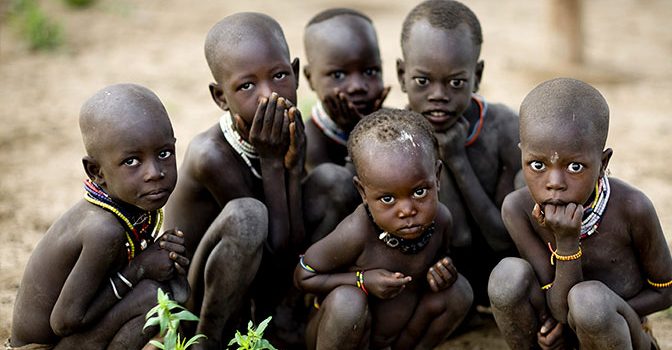

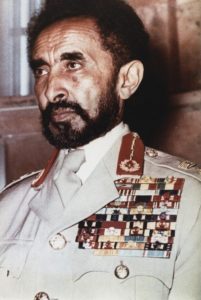
Haile Selassie ended Slavery
It was said only when Haile Selassie came into power that the Ethiopian slavery in Ethiopia and/or the trade in enslaved people was firmly abolished. However many of his predecessor had seriously reduced the trade. This was done in 1924 in a bid to “clean-up” Ethiopia’s image for admission into the League of Nations. Labour not carried out by members of the family was on many cases the work of slaves.
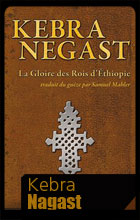
Kebra Negast
The existence of the latter was sanctioned by the Kebra Nagast, which quoted the Biblical book of Leviticus. This declared: Ethiopian slavery differed from the plantation slavery of North America for example, in that it was essentially domestic. Slaves thus served in the houses of their masters or mistresses, and were not employed to any significant extent for productive purposes, Slaves were thus regarded as members of their owners’ family, and were fed, clothed and protected- but not paid any wage, either in kind or cash. They generally roamed around freely and conducted business. Freedom of religion and ethnic culture were also not restricted, they maintained their cultural identity, their names, etc. Slaves in Ethiopia were procured in four main ways.
Some were inherited; either because they were born to a slave belonging to the slave-owning family, or because the master on his demise left them to his heirs. In either case the slaves in question were acquired naturally, at a virtually no expense – and entirely independently of the economists’ laws of supply and demand. Other slaves were seized in the course of warfare – which depended on the exigencies of the battlefield – again quite independently of market considerations. Other slaves again were taken in the course of slave-raiding expeditions. Such captures were carried out at very little cost, so that they would only marginally be affected by lave prices. Some other slaves, finally, were purchased. The price of such slaves might at first sight seem to be influenced by economic factors. This was, however, only marginally the case as the majority of slaves were captured in war or in raiding expeditions – with the consequence that the supply of slaves was in general largely independent of demand.
The Ethiopian slave trade – unlike that practiced in the New World – was by no means unregulated. On the contrary, the Fetha Nagast prohibited the sale of Christians to non-believers. By the time of Emperor Susneyos, in the early 17th century, it was also established that Christians were not allowed to sell slaves of any faith – though they were allowed to purchase them.
The Fetha Nagast’s restriction applied only to Christians – with the result that Muslims were entirely free to sell slaves – and had in fact a virtual monopoly in the business. Islamic paramountcy in the slave trade was reinforced by the fact that slave exports went very largely to Muslim territories, most notably Arabia, Sudan and Egypt, as well as Muslim areas of India.
The Ethiopian slave trade, like other trade, was originally carried out mainly on the basis of barter, for example the exchange of slaves for guns, or with the help of amolé, or bars of rock salt. By the early 18th century increasing use was however also made of Maria Theresa thalers, or dollars. A slave-girl on the trade route to the port of Massawa is said to have exclaimed. “Is it this what serves to purchase children and men?”
Ethiopian slavery differed from that of the West in one other important respect: The Fetha Nagast sought to control – and in a sense to humanise it: by specifying a number of situations in which the slave-owner was obliged to emancipate his or her slave. Market values were to that extent subordinated to moral considerations.
Servants or Slaves as Status Symbols
When servants or slaves – were employed this was largely as a status symbol rather than to meet rationally determined requirements. The middle-class German Protestant missionary Henry Aaron Stern, who came from a more monetary-oriented background, exclaimed in surprise that in the “houses of the great” in Ethiopia the number of “menials” was “literally legion”, while even an ordinary respectable merchant or royal officer might employ as many as twenty men and six or seven women.
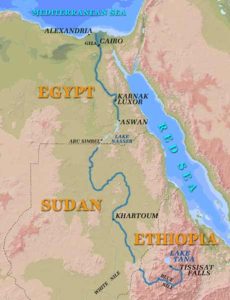
Ethiopian map
The above picture was later expanded by the early 20 th century British traveler Herbert Vivian. Astounded by the number of servants he saw in Ethiopia, he declared that “every one” had “as many retainers as possible, who go with him and eat with him as members of his family” ” Every retainer”, he adds, “has his own duties, and will under no circumstances consent to do any others at all. In a big household one man looks after the tej [i.e. honey wine], and nothing else, another concerns himself only with the guns, another is merely treasurer, another has charge of certain animals. In fact there is an infinite division of labour. Even a small man never goes out of doors without four retainers to accompany him. One carries his gun, another his sword, another his purse, and the fourth, like the man in the Chanson de Malbrook, carries nothing at all. Under no circumstances will they consent to carry parcels. If you take a man with you, buy a small thing and hand it to him to carry, he calls a coolie at once. He will carry your gun, and as many cartridges as is physically possible, but not a bottle or a roll of cloth.”
Corvée Labour
Palaces and churches – and many peasants’ houses -were traditionally built in Ethiopia on an entirely non-monetary basis, i.e. without making any payment to the builders involved. This was noted by the early 19th century by the British traveler Nathaniel Pearce, who observed: “if a church is to be built, every Christian is ready to carry stones, clay etc. gratis. A case in point was when the ruler of Tegray, Ras Walde Selassie, decided to build a new church. He had his drum beaten in Antalo market, Pearce reports, after which he ordered every man living in Enderta to come with rope and axe to cut down the trees. Everything was done, Pearce explains, “without the assistance of any mechanical device” – and also without any kind of payment to the labourers!
Emperor Tewodros, the 19th century protagonist of modern Ethiopia , likewise built the country’s first modern roads, without the use of money. “From early dawn to late at night”, recalls a British eye-witness, Henry Blanc, “Theodore was himself at work; with his own hands he removed stones, levelled the ground, or helped to fill up small ravines. No one could leave so long as he was there himself; no one would think of eating, or of rest, while the Emperor showed the example and shared the hardships”.
Emperor Menilek, later in the century, likewise participated in cutting down trees at Mount Managasha , and in building the churches at Entoto, and elsewhere. One foreigner who witnessed this was the British traveler Henry Savage Landor. Coming from a country with entirely different traditions – and values – he found Menilek’s practice “quaint”, and explained: “If he [Menelik] wishes to put up another building, in the Palace for instance, or a church somewhere, he rides out upon his mule and picks up a stone or a piece of wood, which he carries back to the Palace, or to the spot where the erection is to be made. The thousands of soldiers who always follow him must imitate his example, so that by evening plenty of building material is at hand.”
Slavery today in Ethiopia
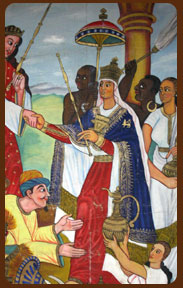
Ethiopians and African slaves
Since the inquiry into child trafficking conducted so far in Ethiopia is inadequate, and because of the clandestine nature of the operation, it is difficult to put the exact figures of victims. That the network of child trafficking is too complicated within the country coupled with the inability of children to protest about the crime perpetrated against them and socities’ silence about what goes on right under their nose have kept the issue a secret for long.
Mahider Bitew, Children’s Rights and Protection expert at the Ministry of Women’s Affairs, says that some isolated studies conducted in Diredawa, Shashemene, Awassa and three other towns of the country indicate that the problem of child trafficking is very serious. According to a 2003 study about one thousand children were trafficked via Diredawa to countries of the Middle East. The majority of those children were girls, most of whom were forced to be sex workers after leaving the country. The International Labor Organization (ILO) has identified prostitution as the Worst Form of Child Labor.
In Ethiopia, children are trafficked into prostitution, to provide cheap or unpaid labor and to work as domestic servants or beggars. The ages of these children are usually between 10 and 18 and their trafficking is from the country to urban centers and from cities to the country. Boys are often expected to work in activities like herding cattle in rural areas and in the weaving industry in Addis Ababa and other major towns. Girls are expected to take responsibilities for domestic chores, childcare and looking after the sick and to work as prostitutes.
“Unfortunately, in the exercise of smuggling and trafficking, the preferred candidates have been girls and women as they can easily be put to prostitution, pornography and sexual exploitation…,” said Proffesor Alpha Omar Konare,
Chairperson of the African Union Commission speaking last Saturday at the commemoration of the Day of the African Child.
Poverty, says Mahider, is one of the causes of child trafficking. Parents participate in child trafficking by sending their children to other towns for good jobs so that the children could work and support themselves, or in some case their families as well. Some children fantasize about working and living a better life in other towns and grab the opportunity when it presents itself.
“In reality they are traded like commodities to work in brutal conditions and many children face beatings and other forms of physical and sexual abuse from their employers,” said Ann M.Veneman.
There are some parents who take the initiative in dealing with brokers to send their children for employment away from their home town. Such well-meaning parents are under the impression that their children will work under normal conditions, be fed properly and paid fairly.
Mahider believes that poverty is not a necessary cause of child trafficking. Not all the poor send there children away. There are some parents who have not enough to support their children yet refuse to send them away from home to work elsewhere in the country. “In contrast, there are children from well-to-do families that have fallen prey to trafficking to other countries. And there they are exposed to harsh, inhumane working conditions and even death.”
Girls brought from the country to cities are usually employed in households as domestic workers or in hotels as waitresses and sex workers. When they can not work any longer and are kicked out, they become street children. Those who move from Addis Ababa to smaller towns are employed in hotels only.
Mahider remembers what she saw in Arbaminch when she went there on a field trip.
“In a hotel where I took lodging, I saw very young girls from Addis Ababa. They were posted there to attract customers. And they were not paid by the hotel. But, if customers took them to bed in or elsewhere outside the hotel, the girls would have to pay the hotel for it.”
Boys who are trafficked from around Arbaminch to Addis Ababa are employed in the domestic weaving industry at Shiro Meda, where they work for long, long hours without the opportunity to play or go to school.
Article 36 of the Ethiopian constitution states that children have the right not to be subject to exploitative practices, neither to be required nor permitted to perform work which may be hazardous or harmful to their education, health or well-being.
And article 29 of the African Charter on the Rights and Welfare of the Child, which was adopted in 1990 and came to force in 1999, refers to child traffcking and calls on member states to take appropriate measures to prevent “the abduction, the sale of, or traffick in children for any purpose or in any form, by any person, including partners or legal guardians of the child”
Trafficking exposes children to violence, sexual abuse severe neglect and HIV infection. It violets their right to be protected, to grow up in a family environment, and to have access to education. It is a crime committed in defiance of both the constitution and the African charter on the rights and welfare of the child.
As the trafficking process involves a number of players, including, families, relatives, friends, recruiters, it has become difficult to identify perpetrators and traffickers and in the process they are left to continue to trade in human beings.
“Cooperation of the society, among whom trafficked children are employed with low enforcement bodies is crucial in preventing child trafficking. But, so far the society in general has been doing almost nothing to combat child trafficking,” said Mahider. For example, city dwellers’ demand for household workers is met by children trafficked from the country, these being much preferred to city children as they are strangers, have nowhere to go for a few years and are scared of what could become of them if they try to run away. Besides they are believed to be more faithful than city children.
So, city folk are in this way recipients of children from the country. “Even though we witness violence committed against children brought from the country and employed next door, we hardly report it to the police. We may observe something suspicious about children being transported from one city to another or within a city by men who do not look like their relatives, but act as if we never saw it. The crime is committed right under our nose,” said Mahder.
There are laws formulated and ILO conventions that Ethiopia has accepted and signed for the purpose of ensuring children’s rights are respected. “The Ethiopian government is working on a ten-year program for the implementation of the conventions. An action plan has been prepared and a national committee formed under the Ministry of Women’s Affairs entrusted with the responsibility of implementing the action plan.”
The committee is composed of governmental and non-governmental institutions. The ministry is going to start a national study on child trafficking next year and that is hoped to provide inputs for intervention, said Mahider.
Awareness raising activities are being carried out on radio programs by the Ministry. Mahider says that besides awareness raising, it is essential that opportunity be provided for children 14 years and upward from poor families to be employed in light works in their own localities as long as that does not get in the way of their education and harm them physically or psychologically.
by Yelibenwork Ayele













